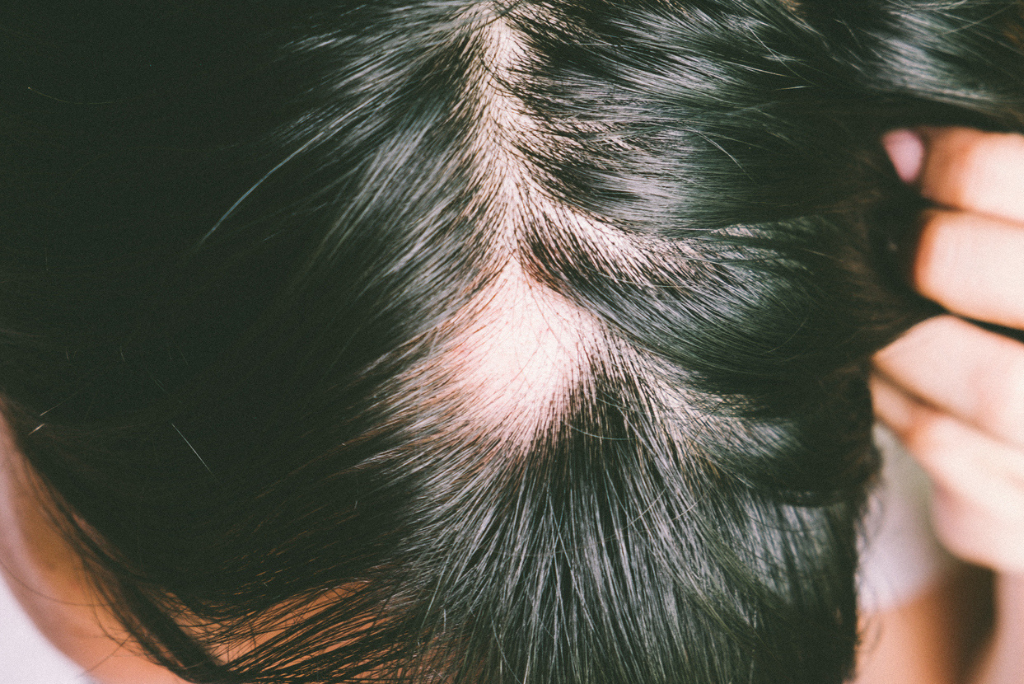Alopecia areata is a condition that causes hair loss in patches on the scalp, face, or other parts of the body. Nearly 700,000 Americans have alopecia areata, which may occur at any age and affects both men and women equally. Currently, this condition has no cure, but treatments are available to help manage the symptoms. Recognizing the different types of alopecia areata, understanding the symptoms, and identifying triggers can help individuals better manage their condition.
Types of Alopecia Areata
Alopecia areata manifests in several forms, each with its own characteristics and hair loss patterns. Understanding these variations is crucial in seeking the most appropriate treatment options. The primary types include patchy alopecia areata, alopecia totalis, and alopecia universalis. Each type affects individuals differently and may require different treatment approaches.
Patchy Alopecia Areata
Patchy alopecia areata, the most common form, manifests as coin-sized bald patches on the scalp or other hair-bearing areas of the body. These patches often appear suddenly and may grow larger over time. In some cases, hair may regrow on its own without any treatment. However, this type of alopecia areata can also progress to more severe forms.
Alopecia Totalis
Alopecia totalis is a more advanced form of alopecia areata where all the hair on the scalp is lost. This type of hair loss can occur gradually or suddenly and often affects the eyebrows and eyelashes. Those with alopecia totalis may experience a complete lack of hair on the head and face, which can significantly impact one’s self-esteem.
Alopecia Universalis
The rarest and most severe form of this condition is alopecia universalis, where individuals experience hair loss over the entire body. This includes all hair on the head, face, and body, including eyebrows and eyelashes. This type of hair loss can also affect nail growth and may lead to other complications, such as skin dryness and sensitivity.
Common Symptoms
Identifying the symptoms of this condition is the first step towards obtaining a proper diagnosis and pursuing effective treatment. Symptoms may vary from person to person, but there are several common indicators to look out for. Early recognition of these signs can aid in managing the condition more effectively. Common symptoms include:
- Unexpected Hair Loss: The sudden appearance of round or oval bald patches on the scalp or other parts of the body.
- Clumps of Hair: Finding clumps of hair on your pillow or in the shower is a sign of alopecia.
- Tingling or Itching: A tingling or itching sensation in the areas where the hair loss occurs.
- Nail Changes: Changes in nail texture, such as pitting (small dents on the surface of the nails), roughness, or thinning and splitting of the nails, might indicate a more severe form of this condition.
- Exclamation Mark Hairs: The presence of short hairs that taper at the base, resembling an exclamation mark, around the edges of bald spots may be a sign of alopecia.
Triggers
Understanding the triggers for alopecia areata is crucial for managing the condition, as they can significantly impact its progression and treatment. Triggers vary among individuals and may include genetic, environmental, and psychological factors. It’s important to note that what triggers a flare-up in one person may not affect another similarly. Some potential triggers include:
- Genetic Predisposition: There is evidence that genetics play a role in the development of the condition, as it often occurs in people with a family history of autoimmune disorders.
- Stress: While stress does not directly cause this condition, it can trigger or worsen flare-ups in those already predisposed to it.
- Autoimmune Disorders: Alopecia areata is an autoimmune disorder, meaning the body’s immune system mistakenly attacks healthy cells. It has been linked with other autoimmune diseases, such as thyroid disease and vitiligo.
- Environmental Factors: Exposure to certain environmental factors, such as toxins or pollutants, may trigger the condition in some individuals.
- Illnesses/Infections: Certain illnesses or infections can weaken the immune system and increase the risk of developing the condition. These include viral or bacterial infections and chronic diseases.
Clinical Advancements and Research Opportunities
While there is currently no cure for this condition, advancements in research and technology have brought about new treatment options and promising developments. Corticosteroids, taken orally or injected into the affected area, have been used to suppress the immune system and reduce inflammation.
Other treatments include topical immunotherapy, minoxidil (a medication used to stimulate hair growth), and hair transplant surgery. Additionally, clinical trials are ongoing for new medications and therapies that target specific immune pathways involved in alopecia areata.
Explore Clinical Trials for Alopecia Areata
Join Olympian Clinical Research in our mission to combat alopecia areata and improve lives through cutting-edge clinical research. The trials we host aim to pioneer new treatments while deepening our understanding of this complex condition. By participating in a clinical trial, you can contribute to groundbreaking advancements in treatment. Contact us to learn more about new and upcoming research opportunities for alopecia areata.

Recent Comments